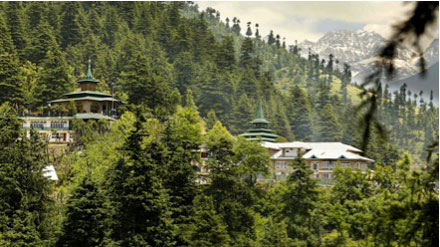
Indian officials have been slow to implement a landmark law giving rights to forests to indigenous people because they view it as a handicap to projects spurring expansion in the fast-growing economy, a land rights campaigner said. Source: Thomson Reuters Foundation
The 2006 Forest Rights Act aims to improve the lives of impoverished tribes by recognizing their right to inhabit and live off forests where their forefathers settled.
Under the law, at least 150 million people could have their rights recognized to a minimum of 40 million hectares (154,400 sq miles) of forest land, the Rights and Resources Initiative (RRI) estimated.
But the group, which promotes access to land and natural resources, says barely 1.2 percent of the area has been recorded in the last decade.
“There is a genuine misunderstanding among the political class that if you grant rights, it will be against development,” said Arvind Khare, an executive director at RRI in New Delhi.
“There is fierce competition among the states for investment in infrastructure and mining. The law is seen as an impediment to this,” he said.
Indigenous people hold legal titles to only about 5% of the land they have lived on.
By recognizing community forest rights and resource rights, the Forest Rights Act could transform forest governance and rural livelihoods, paving the way for the “largest land reform ever” in India, RRI said last year.
Yet few states have implemented the law fully, and more than half of all claims for titles have been rejected, according to recent data from the Ministry of Tribal Affairs.
Eleven of India’s 29 states did not award any titles in the past year.
The law gives village councils the right to approve projects that require forest land to be cleared. This has pitted states keen on development against indigenous people who say their livelihoods are threatened.
“There is very little awareness of the law amongst people, and most claims are rejected on very flimsy grounds,” Khare said.
“But allocating land to industry without settling rights will backfire,” he said.
Conflict over land rights has increased in India as land is sought for industrial use and development projects in one of the world’s fastest growing economies.
Forest land is primarily located in the country’s poorest areas, including some that are racked by extremist violence.
Four people were killed when police opened fire on villagers protesting the takeover of their land for a coal mine in the eastern state of Jharkhand.
The state had earlier approved amendments to two laws to enable the acquisition of tribal land for commercial use.
Government authorities are ignoring evidence that use of forests by local communities can enhance food and livelihood security, and that recognition of community forest rights can lead to development in tribal and forest areas, Khare said.
Thanks largely to the efforts of a handful of states including Odisha, Chattisgarh, Gujarat and Maharashtra, more than 0.5 million hectares of forest land could be recognized this year, Khare estimates.
“But by and large, there is little pressure on the states to recognize forest rights. So we will continue to see big struggles, big conflicts over our forest lands,” he said.





